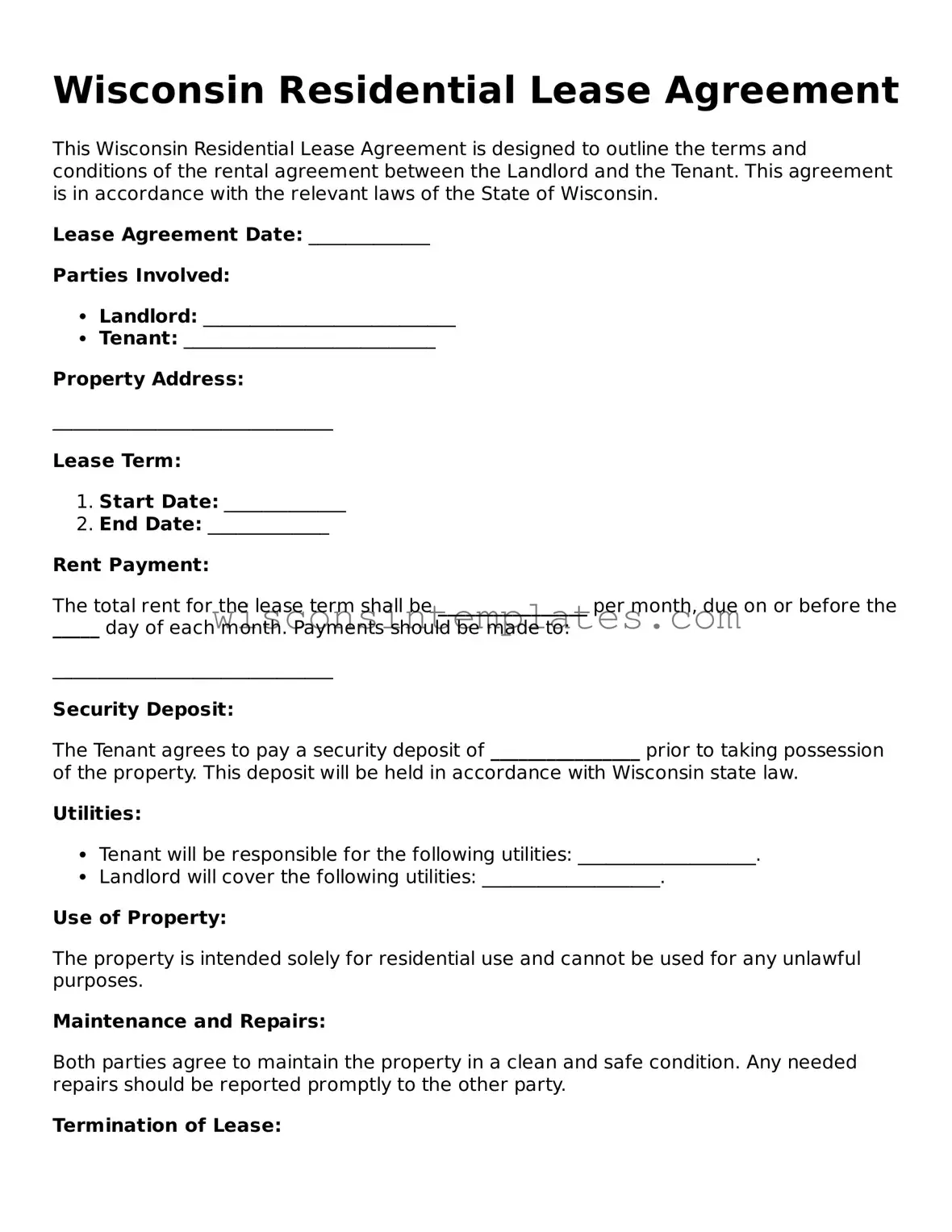Legal Residential Lease Agreement Form for Wisconsin State
The Wisconsin Residential Lease Agreement is a legal document that outlines the terms between a landlord and a tenant for renting a residential property. This form establishes the rights and responsibilities of both parties, ensuring a clear understanding of the rental arrangement. It is essential for protecting the interests of both landlords and tenants in Wisconsin.
Launch Editor Now
